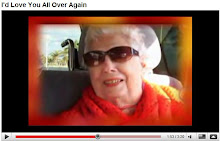The new science of resuscitation is changing the way doctors think about heart attacks—and death itself.
 By Jerry Adler Newsweek
By Jerry Adler Newsweek
May 7, 2007 issue - Consider someone who has just died of a heart attack. His organs are intact, he hasn't lost blood. All that's happened is his heart has stopped beating—the definition of "clinical death"—and his brain has shut down to conserve oxygen. But what has actually died?
As recently as 1993, when Dr. Sherwin Nuland wrote the best seller "How We Die," the conventional answer was that it was his cells that had died. The patient couldn't be revived because the tissues of his brain and heart had suffered irreversible damage from lack of oxygen. This process was understood to begin after just four or five minutes. If the patient doesn't receive cardiopulmonary resuscitation within that time, and if his heart can't be restarted soon thereafter, he is unlikely to recover. That dogma went unquestioned until researchers actually looked at oxygen-starved heart cells under a microscope. What they saw amazed them, according to Dr. Lance Becker, an authority on emergency medicine at the University of Pennsylvania. "After one hour," he says, "we couldn't see evidence the cells had died. We thought we'd done something wrong." In fact, cells cut off from their blood supply died only hours later.
But if the cells are still alive, why can't doctors revive someone who has been dead for an hour? Because once the cells have been without oxygen for more than five minutes, they die when their oxygen supply is resumed. It was that "astounding" discovery, Becker says, that led him to his post as the director of Penn's Center for Resuscitation Science, a newly created research institute operating on one of medicine's newest frontiers: treating the dead.
Biologists are still grappling with the implications of this new view of cell death—not passive extinguishment, like a candle flickering out when you cover it with a glass, but an active biochemical event triggered by "reperfusion," the resumption of oxygen supply. The research takes them deep into the machinery of the cell, to the tiny membrane-enclosed structures known as mitochondria where cellular fuel is oxidized to provide energy. Mitochondria control the process known as apoptosis, the programmed death of abnormal cells that is the body's primary defense against cancer. "It looks to us," says Becker, "as if the cellular surveillance mechanism cannot tell the difference between a cancer cell and a cell being reperfused with oxygen. Something throws the switch that makes the cell die."
With this realization came another: that standard emergency-room procedure has it exactly backward. When someone collapses on the street of cardiac arrest, if he's lucky he will receive immediate CPR, maintaining circulation until he can be revived in the hospital. But the rest will have gone 10 or 15 minutes or more without a heartbeat by the time they reach the emergency department. And then what happens? "We give them oxygen," Becker says. "We jolt the heart with the paddles, we pump in epinephrine to force it to beat, so it's taking up more oxygen." Blood-starved heart muscle is suddenly flooded with oxygen, precisely the situation that leads to cell death. Instead, Becker says, we should aim to reduce oxygen uptake, slow metabolism and adjust the blood chemistry for gradual and safe reperfusion.
Researchers are still working out how best to do this. A study at four hospitals, published last year by the University of California, showed a remarkable rate of success in treating sudden cardiac arrest with an approach that involved, among other things, a "cardioplegic" blood infusion to keep the heart in a state of suspended animation. Patients were put on a heart-lung bypass machine to maintain circulation to the brain until the heart could be safely restarted. The study involved just 34 patients, but 80 percent of them were discharged from the hospital alive. In one study of traditional methods, the figure was about 15 percent.
Becker also endorses hypothermia—lowering body temperature from 37 to 33 degrees Celsius—which appears to slow the chemical reactions touched off by reperfusion. He has developed an injectable slurry of salt and ice to cool the blood quickly that he hopes to make part of the standard emergency-response kit. "In an emergency department, you work like mad for half an hour on someone whose heart stopped, and finally someone says, 'I don't think we're going to get this guy back,' and then you just stop," Becker says. The body on the cart is dead, but its trillions of cells are all still alive. Becker wants to resolve that paradox in favor of life.
















No comments:
Post a Comment